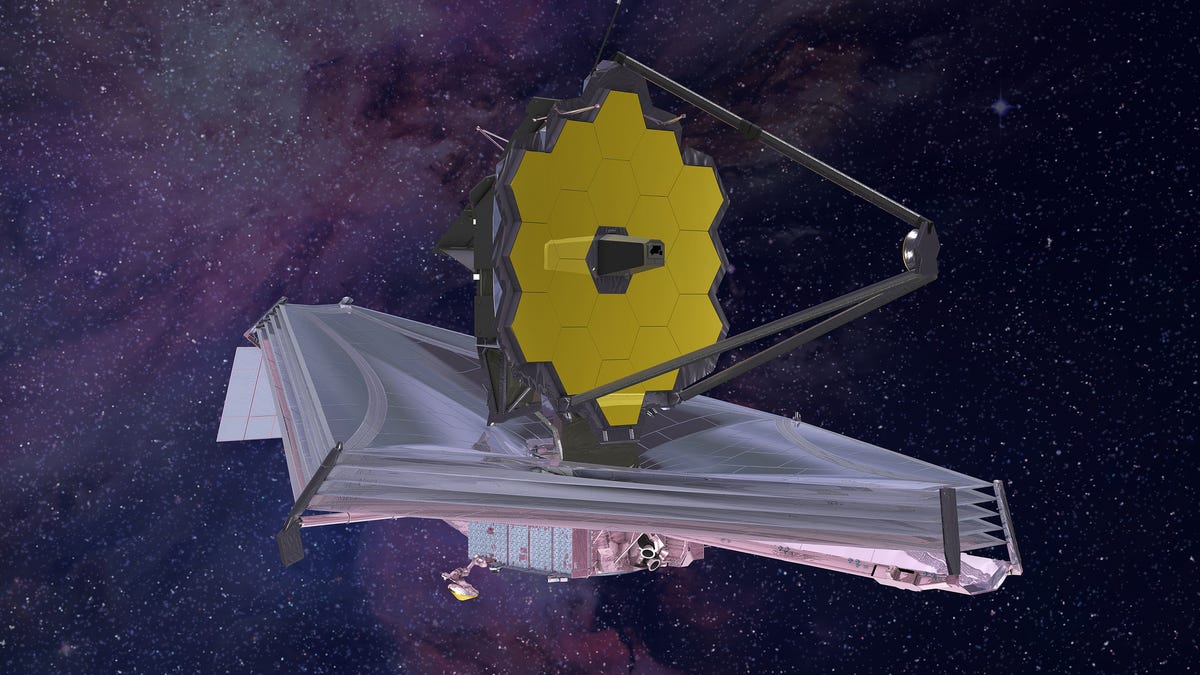NASA Announces Arrival Date of First James Webb Space Telescope Images

This artist's concept shows the James Webb Space Telescope ready for cosmic action.
What's happening
The James Webb Space Telescope is almost ready to begin its operational phase, with its first scientific data and images due within weeks.
Why it matters
JWST is the most advanced space telescope and holds the promise of letting us further back in cosmic time and at a higher resolution than ever before.
A new era in astronomy starts in July.
NASA says the first full-color images from its next-generation James Webb Space Telescope will be released on July 12, a moment that has been decades in the making.
JWST is the successor to the Hubble Space Telescope and was in development in some form dating back to around the time Hubble launched in 1990. It was slated to launch in 2007 but was plagued by more than a decade of delays before finally getting off the ground on Christmas Day 2021.
The observatory has spent all of 2022 so far going through a planned six-month period of calibration and alignment in preparation for its main workload.
"As we near the end of preparing the observatory for science, we are on the precipice of an incredibly exciting period of discovery about our universe. The release of Webb's first full-color images will offer a unique moment for us all to stop and marvel at a view humanity has never seen before," said NASA Webb program scientist Eric Smith in a statement.
Some of the images JWST has taken during this testing phase have already been released and are pretty impressive.
As JWST transitions from preparing to actually performing science, it will start by working through a list of predetermined targets that include a number of Jupiter-sized exoplanets as well of some super-Earths.
"Our goals for Webb's first images and data are both to showcase the telescope's powerful instruments and to preview the science mission to come," said astronomer and Webb project scientist Klaus Pontoppidan. "They are sure to deliver a long-awaited 'wow' for astronomers and the public."
In addition to looking at distant planets, NASA says its first batch of images from Webb's operational phase will also touch on the other areas JWST will investigate, including the history of the early universe, the evolution of galaxies and the lifecycle of stars.
On top of what scientists plan to use JWST to study, there are also likely to be unanticipated discoveries along the way. Observations from Hubble famously led to the discovery of dark energy. What we find next remains to be seen, but hints might be found in the images set to be released on July 12.

